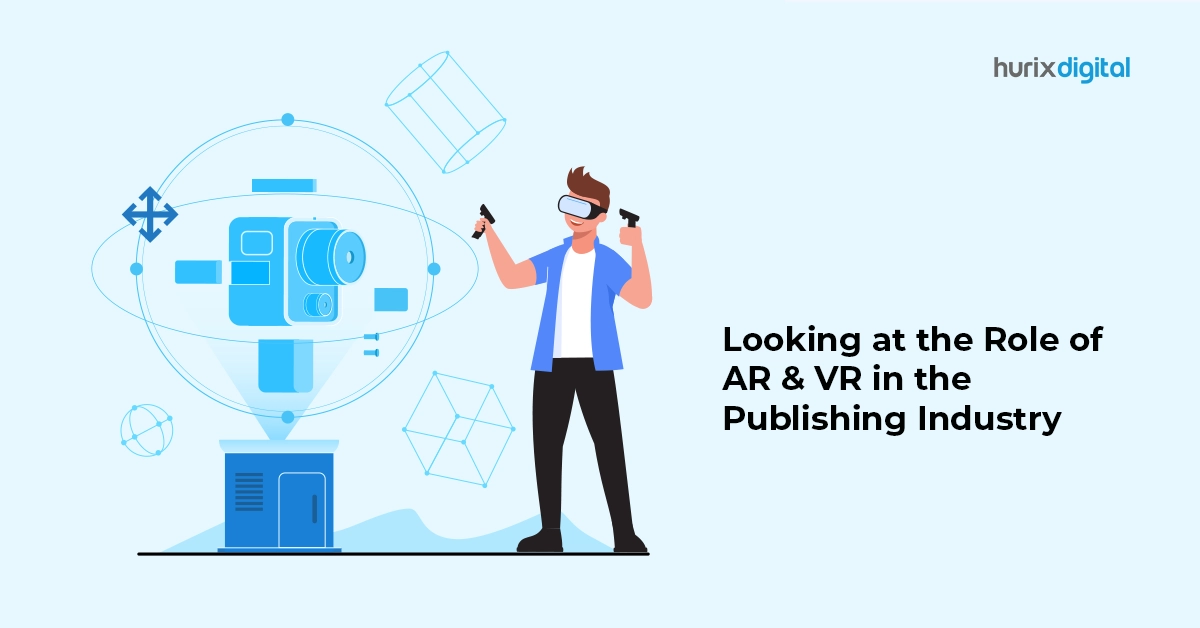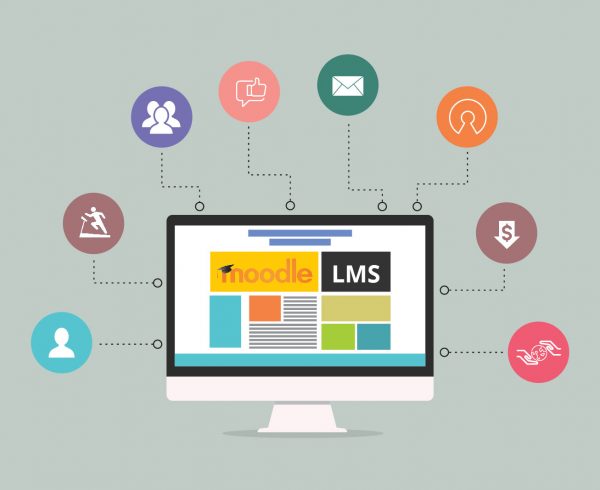Summary
Augmented (AR) and virtual reality (VR) technologies are revolutionizing publishing by offering immersive, interactive reader experiences. This blog explains the significant growth and how it is transforming digital storytelling with gamification, 3D graphics, and virtual tours, enhancing engagement and accessibility in the publishing sector.
The way content is created, consumed, and interacted with has changed dramatically in recent years, largely due to technological advancements in the publishing industry. Two cutting-edge technologies revolutionizing publishing are augmented reality (AR) and virtual reality (VR). These technologies provide readers with immersive and captivating experiences, unlike anything they have ever had before.
In 2024, the AR and VR market is expected to bring in US$38.6 billion in revenue. By 2028, the market is predicted to have grown to US$58.1 billion, with a compound annual growth rate (CAGR) of 10.77%. Additionally, AR and VR will have manifold impacts on the future of publishing.
This blog outlines the function of augmented reality (AR) and virtual reality (VR) in the publishing sector, as well as their advantages and possibilities for improving reader engagement and digital storytelling.
Table of Contents:
- What is Augmented Reality in Publishing?
- What is Virtual Reality in Publishing?
- Use Cases of Augmented Reality/ Virtual Reality in Publishing
- Benefits of Augmented Reality/ Virtual Reality in Publishing
- Future of Augmented Reality/Virtual Reality in Publishing
- Takeaway
What is Augmented Reality in Publishing?
Publishers now have a plethora of options thanks to augmented reality, which combines the virtual and physical worlds to give readers lively and interactive experiences.
- By adding captivating graphics, animations, and interactive components to static content, augmented reality (AR) is being utilized in the publishing sector to improve traditional print media.
- AR in publishing bridges the gap between print and digital media by providing readers with an all-encompassing experience that engrosses and immerses them in the content.
- With the help of augmented reality (AR) technology, publishers can produce books that readers can interact with through interactive games, videos, audio clips, and 3D animations using their smartphones or tablets.
This interactive content strategy appeals to tech-savvy consumers who require personalized and engaging content, while also improving the reading experience.
Also Read: The Latest Trends in Prepress Services: What You Need to Know
What is Virtual Reality in Publishing?
Another cutting-edge technology that is causing a stir in the publishing sector is virtual reality, which provides readers with interactive, fully immersive experiences in a virtual realm of storytelling.
Publishers can use virtual reality (VR) to produce 360-degree settings, virtual tours, and interactive accounts that push the boundaries of storytelling and redefine what it means to read.
- Virtual reality books provide readers the opportunity to enter the narrative, investigate various points of view, and interact with the material in a way that is both engrossing and unforgettable.
- With the use of virtual reality (VR) technology, publishers can produce virtual libraries and instructional materials that conflate fact and fiction.
- Virtual reality books facilitate a more profound connection and comprehension of the narrative by allowing readers to interact with protagonists, locations, and plotlines in a manner not possible with traditional books.
- Virtual reality (VR) is also being used in educational publishing to produce enhanced learning experiences that are engaging and informative while accommodating a variety of learning styles.
Use Cases of Augmented Reality/ Virtual Reality in Publishing
Given that the market is primed for rapid expansion, what are some strategies publishers have employed to leverage this trend? Virtual and augmented reality are now being utilized to improve digital publishing in several ways. Here are a few instances:
1. Digital Storytelling
Virtual and augmented reality presents a potent tool for crafting various kinds of stories. Readers can witness a story coming alive and obtain additional information by utilizing an augmented reality application.
A user of AR or VR can read an article, view a 3D graphic, and tune in to an audio form all at once.
2. Gamification
Gamification is a technique that publishers are using extensively to add fun and engagement to their content. When used properly, it can motivate readers to investigate the worth of their membership, boost participation with a publisher’s back catalog, and inspire students to interact with campus-wide educational resources.
3. Advertising Pop-Ups
AR and VR are used to create innovative advertising publications. When still images shift, interact with one another, and even show up in three dimensions, viewer engagement will continue to rise. Because the content is more captivating, engaging, and difficult to ignore, it may result in fewer CPMs and more successful advertising.
Benefits of Augmented Reality/ Virtual Reality in Publishing
Publishers, writers, and readers can all gain greatly from the publishing industry’s adoption of AR and VR. Some of the main advantages are:
- Personalized and Tailored Content: Publishers can produce content that is more deeply engaging for readers and appeals to a variety of audiences by utilizing AR and VR technologies.
- Renders Content More Accessible: VR can also increase accessibility for readers with impairments. For readers who are not native language speakers, augmented reality (AR) can offer instant interpretations, sign language, and voice notifications. For those with impairments, it can offer a more inclusive encounter through virtual tours of museums and art galleries.
- Possibilities for Education: Virtual reality (VR) technology is being used in educational publications to produce interactive learning experiences that increase students’ understanding and engagement with difficult concepts.
- Enhanced Marketing Opportunities: Engaging and viral content that grabs and retains readers’ interest can be produced using AR and VR in marketing campaigns.
Future of Augmented Reality/Virtual Reality in Publishing
The use of virtual and augmented reality in digital publishing has tremendous possibilities as these technologies continue to progress. Publishers with a culinary topic could provide an augmented reality culinary workshop as a paid online course, or travel publications may offer virtual reality tours of an area as an additional perk for subscribers.
An increasing number of customized and immersive experiences are being seen in content. Audio editions of blogs, podcasts, and video interviews integrated into articles have all become commonplace in the last few years.
With virtual reality growing in popularity, these captivating experiences may go to new heights. Virtual reality (VR) can immerse the reader in a discussion, and most people will agree that there is nothing better than witnessing a narrative firsthand.
Check out EXCLUSIVE: Hurix Mini-Book: PrePress Tips You Won’t Find Anywhere Else
Takeaway
Augmented reality/ Virtual reality in publishing plays a transformative and innovative role by providing readers with immersive experiences that stimulate the senses. These advanced technologies are revolutionizing the way content is produced, consumed, and engaged. We can anticipate a new era of publishing that fascinates readers and broadens up a world of prospects for the future of digital storytelling.
If you are looking for technological solutions to leverage in your publishing journey, get in touch with Hurix Digital. As a comprehensive supplier of digital content solutions, we produce, modify, and disseminate interesting digital content for both older and more recent mobile platforms, formats, and gadgets. Contact us for more information today!











